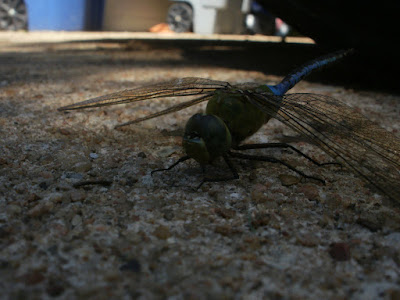 |
| An honor to be climbing with The Prez of the Texas Invasive Plant and Pest Council and The Lady that is responsible for my love of science (and wavy hair) |
So, me and some lovies went to Enchanted Rock, Texas. It reminded me of my last trip to Enchanted Rock, wayyyy too long ago with a precious godmother, or madrina, who was visiting for a baptism circa the spring equinox. I also have many a memory of camping here during college. Ergo, during this hike, I was twice filled with The Love: the lovies of the present, and the lovies of the past. I will spare you the relevant Sesame Street video, but let's all agree, climbing Enchanted Rock is fun.
What is Enchanted Rock? It is a big granite intrusion. It's most common minerals, I believe, are microcline, plagioclase, quartz, and biotite. You can follow a geological tour up the hill, it's nice.
Schmanyways, obvs there are associated soil photos, but first (!!!) here is what Enchanted Rock looks like from the road.
 |
| Since Texas is unfairly known for being quite flat, this is kindof a big deal. Look, a protuberance! |
A closer peek...
We climbed to the top and had some cool views.
Forgive me because I have lots of pictures I want to share about an obsession I didn't really know I had: plants appearing to grow out of rocks (!!!).
People in the know are calling them vernal pools. Vernal pool ecology is created by pioneer species: they are the first to colonize a mostly abiotic area.
 |
| I like this pic: this is a vernal pool - the first inklings of entisol soil formation. |
 |
| I think that is an oak tree. Sorry for my photo smidge on the right. |
 |
| Looking uphill, presumably native grass. |
 |
| Same area. |
 |
Some cactus. |
 |
| The top. |
In fact, by studying weather pits, ecologists learn: (1) how plants and animals colonize a newly formed habitat; (2) how those organisms modify their environment and help develop soils; and, (3) how plant and animal community structure and composition change over time.In other words, they are super neat.
At Enchanted Rock you can see the progressive development from bare rock-bottom pits, to annual plant establishment, to miniature prairies with grasses like little bluestem and even trees like live oak. Vernal pools also support an interesting species of invertebrate, the fairy shrimp. These tiny animals survive total desiccation as fertilized eggs, and hatch into larvae and grow into adults each time water collects after sufficient rainfall.Since these things are super cool, and their ecosystems are so fragile, the Texas Parks and Wildlife Department wants to make sure visitors are aware of their significance and asks them to back off.
"STAY ON THE ROCK," they say. And,
"Thank you for protecting an important part of the Enchanted Rock experience."
 |
| Look at the length of the root compared to the height of the above-ground portion (green leaves only). This was on the bank of a dry creek bed. |
Have a great visit!
P S. Natural resources of Enchanted rock found here.




















